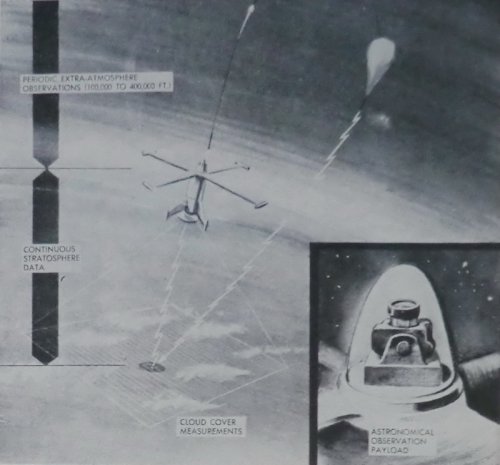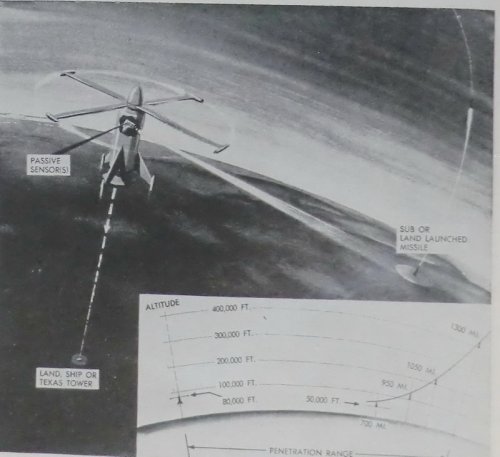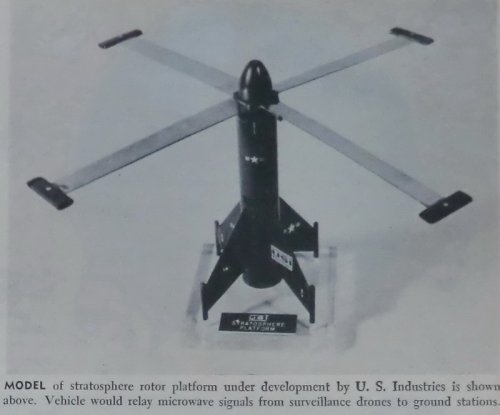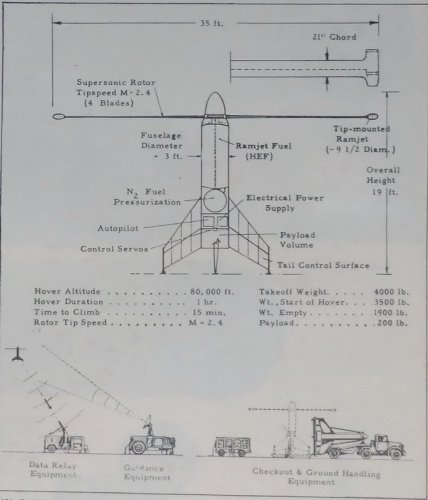CONCEPT OF FIXED, OFFSHORE RADAR PLATFORMS FIRST OUTLINED
AUGUST 1, 1952
The concept of fixed, offshore radar platforms was first outlined in a
report dated August 1, 1952, by Lincoln Laboratory of the Massachusetts
Institute of Technology. The report found that such structures
were possible, if we used shoals that were known to exist 80
to 100 miles off the northeast coast. Accordingly, Lincoln Laboratory
recommended consideration of facilities suggested by the original
Texas towers—oil drilling platforms in the Gulf of Mexico—to be
placed at five selected locations in North Atlantic shallows.
OPERATIONAL ADVANTAGES OF TEXAS TOWERS
The Air Force concurred, with due regard for the significant operational
advantages that Texas towers, in common with land-based radar
sites, had over both picket ships and early warning aircraft. Unlike
the latter, for example, Texas towers could be linked automatically
with the SAGE system. Texas towers, moreover, provided a fixed
platform, thereby permitting effective radar operations even under
adverse weather conditions—a capability that was not possessed by
shipborne or airborne radar. In addition, the locations of Texas
towers were exactly known and hence their data was considerably more
precise than that gathered from mobile stations.
Early in 1954, after the operational requirement for Texas towers
was established, the Air Force initiated discussions with the Navy,
through its Bureau of Yards and Docks, for the actual implementation
of the Texas tower concept. The Navy agreed to act for the Air
Force as its design and construction agency. As a first step, the Navy
selected the architect-engineering firms of Moran, Proctor, Mueser &
Eutledge, of New York City, and Anderson-Nichols, of Boston, to
conduct a feasibility study. The Navy also made arrangements with
the Woods Hole Oceanographic Institution, Woods Hole, Mass., to
furnish to the architect-engineer wind and wave data. The architectengineer
study, which was completed on October 1, 1954, found that
the Texas towers were technically feasible and could be built. Work
on detailed designs and specifications was begun shortly thereafter by
contract between the Navy and the same architect-engineer.
INQUIRY INTO THE COLLAPSE OF TEXAS TOWER 4
HEARINGS BEFORE THE PREPAREDNESS INVESTIGATING SUBCOMMITTEE
OF THE COMMITTEE ON ARMED SERVICES
UNITED STATES SENATE
EIGHTY-SEVENTH CONGRESS
FIRST SESSION
MAY 3, 4, 10, 11, AND 17
(1961)




